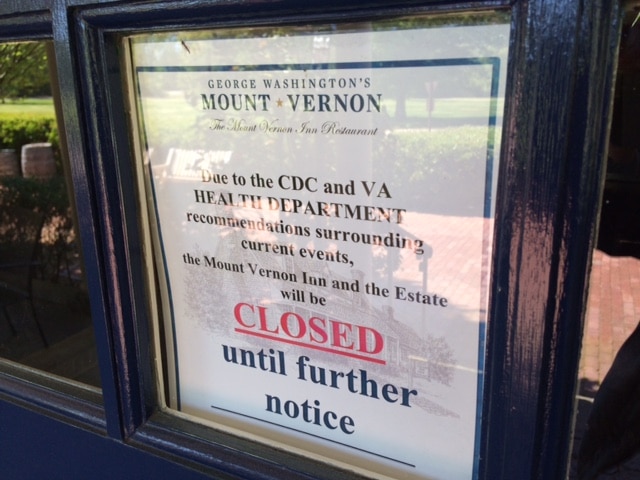Pandemic Tightens Grip on US, Setting Reopened States Reeling

The COVID-19 pandemic, which set records for infections and hospitalizations across the U.S. on Wednesday, is now predicted to kill 180,000 Americans by October, adding to dire signs that prompted a stock-market selloff and drastic measures from government leaders.
The U.S. is again approaching its all-time high for daily new cases, 36,188, set April 24 as the New York area was ravaged. The daunting new numbers reflect the virus’s inexorable spread in some states that were slow to enforce lockdowns or quick to lift them. They made clear to places where the disease was late to arrive that there are no magical escapes.
California, Florida and Texas each hit records for new cases Wednesday, while Arizona is at a peak in hospitalizations. New York, New Jersey and Connecticut set quarantines for incoming travelers from the hot zones, and North Carolina froze its reopening for three weeks.
Markets took note. The S&P 500 plunged 2.6%, led lower by energy and airline stocks, while yields on Treasuries fell.
Thomas Giordano, chief of infectious diseases at Baylor College of Medicine in Texas, compared the outbreak to a wildfire that started in the northern corners of the U.S. and slowly spread south.
“As people started emerging and businesses started opening, it was like oxygen for those embers and it’s stoked the fire,” he said. “It’s been burning in Texas and other places in the South without any changes in policy. I do worry that this is going to run wild.”
The fresh estimate of deaths by the University of Washington’s Institute for Health Metrics and Evaluation was actually about 10% lower than a previous model. But after months of lockdown without a unified national strategy, more than 121,000 Americans have died already. The Trump administration has largely left policy-making to the states, which have followed strategies ranging from tight lockdowns in Northeast to relative laissez-faire in the South and West.
In California, which was early to enact statewide shelter-in-place rules in March, Gov. Gavin Newsom urged residents to recommit to slowing the pandemic. Newsom, who last week issued an order requiring face masks in public, said too many people were letting down their guard against the virus, which has killed more than 5,600 people in the state. California has recorded record numbers of confirmed infections and hospitalizations this week, as more businesses open and social justice demonstrations continue.
“We cannot continue to do what we have done over the last number of weeks,” Newsom said in a press conference Wednesday, after the state reported more than 7,100 new cases. “Many of us, understandably, developed a little cabin fever. Some, I would argue, have developed a little amnesia.”
In Florida, leaders rushed to pass mask mandates and crack down on the bars and nightclubs where the pandemic is spreading, including a threat to pull liquor licenses in Orlando.
Texas posted its worst day so far for new cases, with a jump of 5,551 to 125,921, according to the state health department. The 4.6% one-day rise exceeded the 3.7% seven-day average. Hospitalizations climbed by 7.3% to 4,389, the data showed.
“Our infrastructure is overwhelmed,” David Persse, Houston’s director of emergency medical services, said during a media briefing Wednesday.
Demand for intensive-care beds there jumped 10% in one day. At the Texas Medical Center, a cluster of hospital systems that together operate the world’s biggest medical complex, the number of intensive-care cases surged to 1,298 in a system with a normal operating capacity of 1,330.
The complex could be out of intensive-care capacity as soon as Thursday, and exhaust its backup capacity in another 10 days, it said.
The fresh surge raised the specter of new shortages of ventilators and gear. In Colorado, “hospitals have increased their capacity by upwards of 20%,” Governor Jared Polis said at a news conference. “If we hit much higher levels, we don’t currently have the supplies in place to handle that. We would enter another kind of crisis.”
The spike in cases comes as states across the U.S. have either already lifted or are easing lockdown orders, many at the behest of President Donald Trump. Some should reconsider, said Ali Mokdad, professor of health metrics sciences at the Institute for Health Metrics and Evaluation at the University of Washington.
Mokdad said states with surging cases should consider requiring masks and closing certain businesses. He said the pre-emptive closures could be for a set period to give businesses more certainty than the previous shutdown.
“I can’t see a possibility of any of the states with the increases you are seeing right now not dialing back,” Mokdad said. “From a public-health standpoint, shutting down faster, you can open faster and earlier and your economy will open faster and much better.”
Indeed, North Carolina Gov. Roy Cooper on Wednesday halted that state’s reopening after new daily cases hit 1,721, up from 848 the day before. He ordered that masks be worn in public and said the state would delay further decisions for three weeks. “Our increasing numbers show we need to hit the pause button while we work to stabilize our trends,” Cooper said.
The state was among those whose residents were targeted by quarantine orders in the Northeast, which was struck early and has largely quelled its outbreak. The governors of New York, New Jersey and Connecticut said travelers from nine Southern and Western states where more than 10% of tests for Covid-19 were coming back positive would have to seal themselves off for 14 days. New York is threatening thousands of dollars in fines for noncompliance.
In a mark of how the COVID landscape has changed, the list includes Florida and Texas, which both imposed similar restrictions on travelers from the Northeast in March. “We did a full 180 degrees,” Cuomo said.
The other states on the list are North and South Carolina, Arizona, Arkansas, Utah and Alabama, where Gov. Kay Ivey once scoffed at COVID-19 lockdowns: “Y’all, we’re not Louisiana, we’re not New York state,” she said on March 27.
America is on track to lose 180,000 lives to coronavirus by the start of October, roughly equivalent to the population of Providence, Rhode Island, according to the University of Washington experts, though they said an embrace of masks would mitigate the damage.
The forecast is predicated on the expectation that the outbreak will pick up in late August and intensify further in September. If more than 95% of Americans start regularly wearing masks in public, that number would drop to 146,047 deaths.
In Houston, Mayor Sylvester Turner promised a redoubled effort. He said police and fire departments will step up monitoring of taverns and clubs to ensure compliance with occupancy limits and mask requirements.
“We want to create a board of shame for those who are violating the rules,” he said.
———
©2020 Bloomberg News
Distributed by Tribune Content Agency, LLC.

























